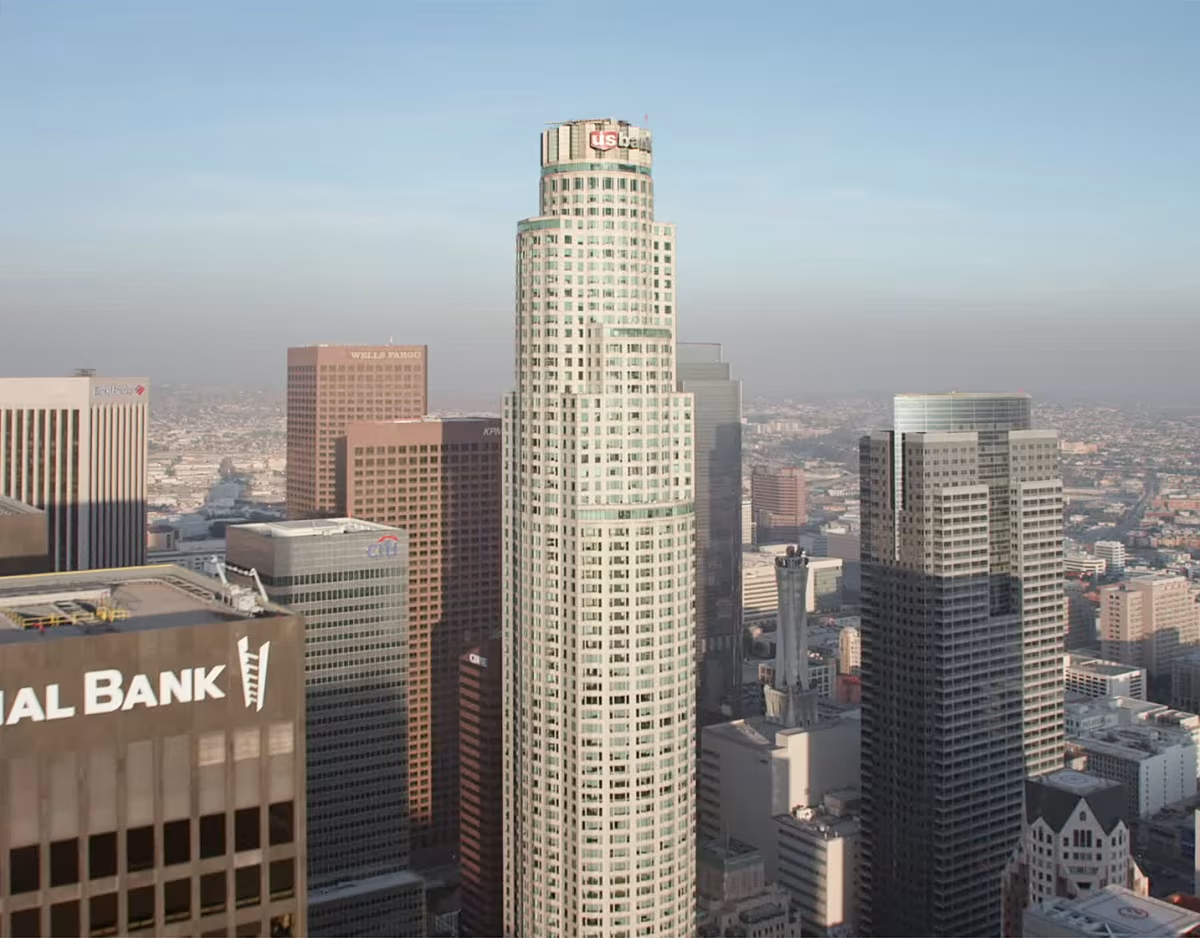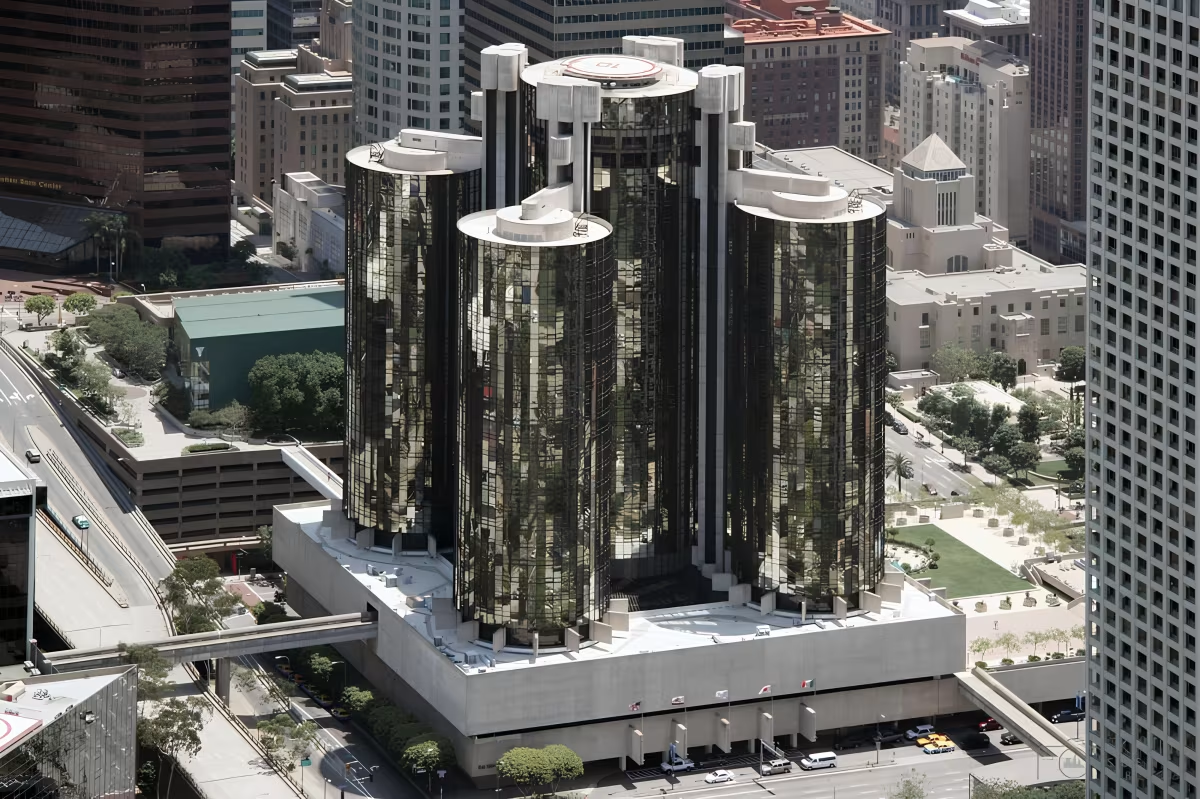U.S. Bank Tower vs Westin Bonaventure Hotel


Comparing the U.S. Bank Tower and the Westin Bonaventure Hotel is interesting because they both rise in Los Angeles, CA, yet they were conceived by two different design teams, Pei Cobb Freed & Partners and John C. Portman Jr., and were completed at different points in time. They were finished more than a decade apart.
This contrast within the same city allows us to see how different creative minds interpreted the evolving needs of Los Angeles across time.
Let's take a closer look!
Height & Size
The U.S. Bank Tower is clearly the larger tower of the two, both in terms of height and number of floors. It rises to 1017ft (310m) with 73 floors above ground, while the Westin Bonaventure Hotel reaches 387ft (118m) with 33 floors above ground.
U.S. Bank Tower also offers more total built-up area, a total fo 1,754,516 sqf (163,000m2), which is about 166,797 sqf (15,496m2) more than what the Westin Bonaventure Hotel offers.
The U.S. Bank Tower also concentrates more floor area on its site, indicating a higher floor area ratio.
Of course, each project may have faced different briefs or regulatory constraints, which we don't really know about and could also explain the outcome.
Architectural Style
Both the U.S. Bank Tower and the Westin Bonaventure Hotel were designed in line with the aesthetic conventions of the Postmodernism style.
At the time, this style was at the height of its popularity. So both Pei Cobb Freed & Partners and John C. Portman Jr. followed what was in many ways expected of them, producing designs that fit comfortably within contemporary architectural norms, rather than breaking with convention.
Uses
The U.S. Bank Tower is primarily commercial, while the Westin Bonaventure Hotel is primarily hotel.
The Westin Bonaventure Hotel incorporates a 4-star hotel with 1354 rooms. More information is available at the official website.
The U.S. Bank Tower also provides 1396 parking spaces.
Structure & Facade
The two towers rely on different structural systems, reflecting distinct engineering strategies.
The U.S. Bank Tower uses a Framed Tube In Tube structural system, which combines a strong central core with a perimeter tube of columns, while the Westin Bonaventure Hotel uses a Frame system, that relies on a regular grid of columns and beams to sustain its weight.
Yet, when it comes to their facade, they both employed the same solution, a Curtain Wall facade.
A curtain wall is a non-load-bearing facade hung from the structural frame. It is anchored to floor slabs and transfers only its own weight and wind loads, allowing for sleek, glassy exteriors.
| U.S. Bank Tower | Westin Bonaventure Hotel | |
|---|---|---|
| Pei Cobb Freed & Partners | Architect | John C. Portman Jr. |
| 1987 | Construction Started | 1974 |
| 1989 | Year Completed | 1976 |
| Postmodernism | Architectural Style | Postmodernism |
| Commercial | Current Use | Hotel |
| 73 | Floors Above Ground | 33 |
| 2 | Floors Below Ground | 4 |
| 310 m | Height (m) | 118 m |
| 163000 | Built-up Area (m²) | 147504 |
| 44 | Number of Elevators | 12 |
| Framed Tube In Tube | Structure Type | Frame |
| Concrete And Steel | Vertical Structure Material | Steel |
| Concrete | Horizontal Structure Material | Concrete And Steel |
| No | Facade Structural? | No |
| Glass, Aluminum | Main Facade Material | Glass |
| CBM Engineers | Structural Engineer | |
| CA | State | CA |
| Los Angeles | City | Los Angeles |
| 633 West Fifth Street | Address | 404 South Figueroa Street |